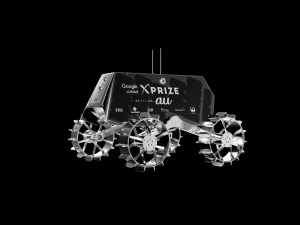
TeamIndus has announced that a commercial agreement has been signed for the spacecraft to carry a robotic rover developed by HAKUTO, the Japanese team in the Google Lunar XPRIZE, to the Moon in late 2017. This is a first of kind collaboration of two private space enterprises competing in the Google Lunar XPRIZE- TeamIndus of India and HAKUTO of Japan coming together.
Rahul Narayan, TeamIndus Fleet Commander said, “We are delighted to welcome HAKUTO on board our Spacecraft and look forward to working with them over the next few months. After our PSLV launch contract announcement, this is a reaffirmation of our technology preparedness as we continue to build towards becoming the first private entity to land on the Moon.”
Sridhar Ramasubban, TeamIndus Jedi Master – International Sales added, “This collaboration is a testimony of the fruitful Indo-Japanese relationships. Startups are leading the resurgence of space technology demonstration and development globally, and this partnership sets an example for greater things to come in the future. TeamIndus can carry upto 20 kgs of payload of which the Japanese rover is 4kgs. In addition to that we are carrying International University payloads and student experiments under our Lab2Moon initiative.”

Both the teams have already demonstrated their technology by winning Milestone Prizes from Google Lunar XPRIZE in 2015. TeamIndus won $1million for demonstrating its landing technology and HAKUTO won the $500,000 Mobility Prize for the robotic rover it developed. The TeamIndus spacecraft, in addition to the Japanese Rover, will also be carrying the indigenously designed and developed robotic rover, ECA.
TeamIndus will launch the Spacecraft aboard the Polar Satellite Launch Vehicle (PSLV), which will inject the Spacecraft into an orbit 800 km above the surface of the earth. From there on, the Spacecraft will set course to the Moon by switching on its own engines in a series of complex orbital manoeuvres.
After hitting a maximum speed of 10.3 km per second en route to the Moon, the spacecraft will fire its rocket engines again, this time to decelerate and land softly on the lunar surface as the dawn breaks on Mare Imbrium, a vast lava plain and among the larger craters in our solar system. The rovers would then be deployed on the surface of theMoon.
Original published at: http://spacewatchme.com/2016/12/hakuto-set-hitch-ride-moon-teamindus-spacecraft/
 SpaceWatch.Global An independent perspective on space
SpaceWatch.Global An independent perspective on space

